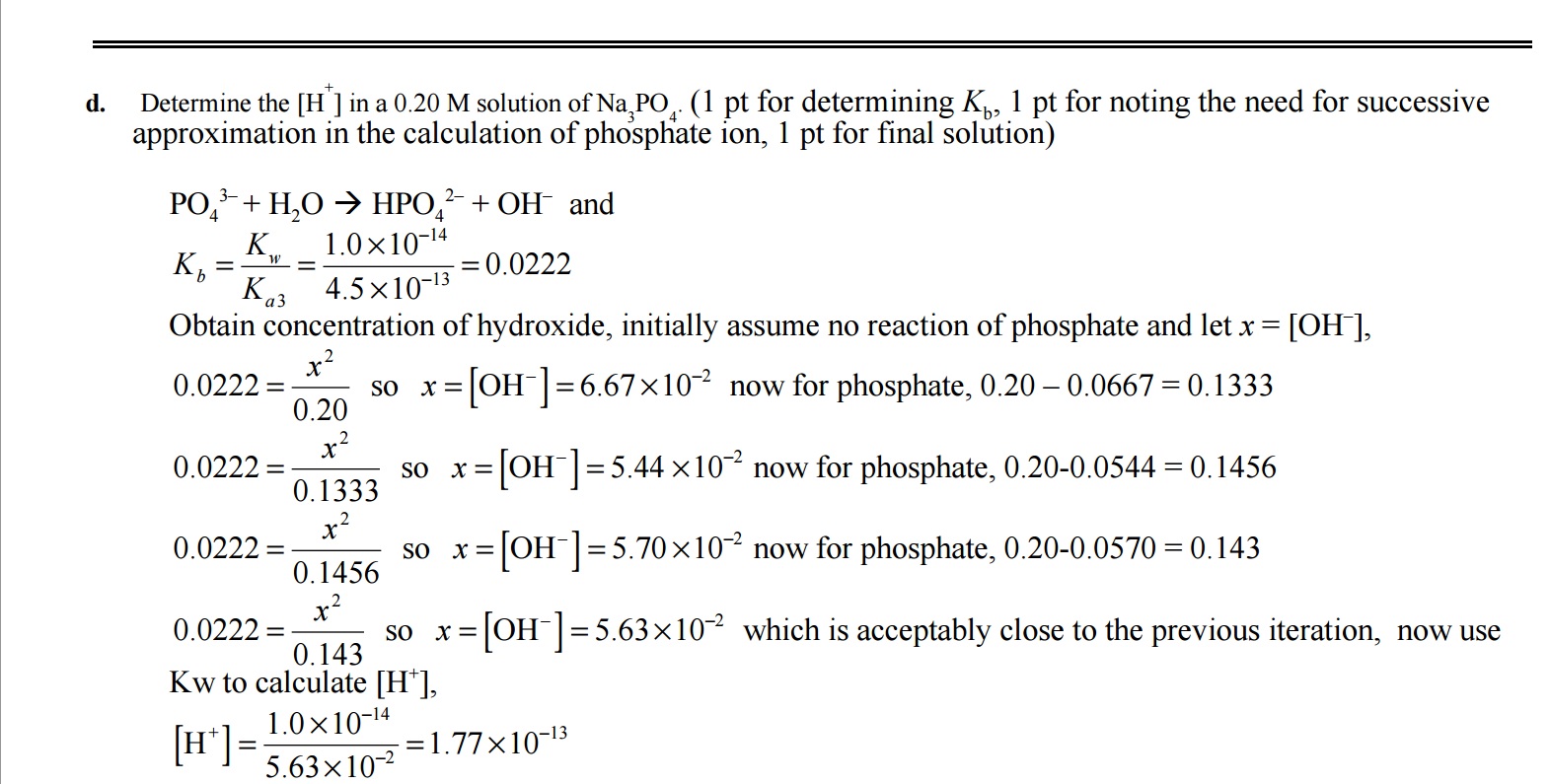This method of repeating iterations is interesting, though I would suggest something perhaps a little more straightforward (and rigorous) than doing something until you are "acceptably close."
This method I learned is called a RICE diagram.
Reaction
$$\ce{PO4_{(aq)}^{3-} +H2O_{(l)}<=>HPO4_{(aq)}^{2-} +OH^{-}_{(aq)}}$$
Initial (concentrations)
$$[\ce{PO4^{3-}}]=0.20~~~~~[\ce{HPO4^{2-}}]=0~~~~~[\ce{OH-}]=0$$
Change (in concentrations)
$$[\ce{PO4^{3-}}]=-x~~~~~[\ce{HPO4^{2-}}]=+x~~~~~[\ce{OH-}]=+x$$
Equilibrium (concentrations)
$$[\ce{PO4^{3-}}]=0.20-x~~~~~[\ce{HPO4^{2-}}]=x~~~~~[\ce{OH-}]=x$$
We can write the reaction expression as:
$$K_\mathrm{b}=\frac{[\ce{HPO4^{2-}}]\cdot[\ce{OH-}]}{[\ce{PO4^{3-}}]}$$
We substitute in the equilibrium concentrations and the $K_\mathrm{b}$:
$$2.22\times10^{-2}=\frac{[x]\cdot[x]}{[0.20-x]}$$
And solve for $x$:
$$2.22\times10^{-2}=\frac{x^2}{0.20-x}$$
$$4.44\times10^{-3}-2.22\times10^{-2}\cdot x=x^2$$
$$0=x^2+2.22\times10^{-2}\cdot x-4.44\times10^{-3}$$
Use the quadratic formula:
$$x=\frac{-b\pm\sqrt{b^2-4ac}}{2a}$$
$$x=\frac{-(2.22\times10^{-2})\pm\sqrt{(2.22\times10^{-2})^2-4(1)(-4.44\times10^{-3})}}{2(1)}$$
$$x\approx-7.87\times10^{-2},~5.65\times10^{-2}$$
Obviously the negative solution is not applicable to our problem, so $x=5.65\times10^{-2}$.
Since $x=[\ce{OH-}]$, $[\ce{OH-}]=5.65\times10^{-2}$.
We know that:
$$[\ce{H+}]\cdot [\ce{OH-}]=1\times10^{-14}$$
so:
$$[\ce{H+}] \cdot [5.65\times10^{-2}]=1\times10^{-14}$$
$$[\ce{H+}] =\frac{1\times10^{-14}}{5.65\times10^{-2}}\approx1.77\times10^{-13}$$
If you have access to a calculator with a numerical solver function, I would recommend that instead of using the quadratic formula, but if not, this is how it is done.

